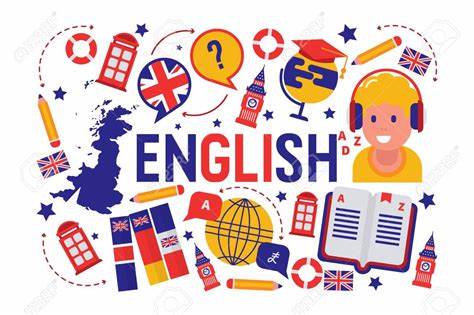Inglés: Comunicación Básica
Objective: Enable preschool students to develop skills within preschool to identify, understand and manage their emotions through practical and visual activities, to improve emotional management in the face of difficulties derived from the family context and its learning barriers.
PDA. Learning Development Process:
Explain to their peers or others an emotion, experience, or person they wanted to represent, based on the graphic marks or symbols they recorded, for example: "Here it shows that I am happy."
Warm up
Initial Question: Do you know about emotions?
Goal: Explore and learn about our emotions in a fun way.
We'll start by watching a video. Pay close attention so we can discuss what we saw later. https://youtu.be/GQFWg0hafIA?si=viwKLBcvGL9qTBau
Mirror Activity:
- Each child will have a mirror in front of them.
- We will ask them to observe their facial expressions while experiencing different emotions such as joy, sadness, anger, fear, and surprise.
- We will guide a discussion on how they look and feel when experiencing each emotion.
Development
Calm Chair Practice
- We will introduce the calm chair as a space where children can go when they feel emotionally overwhelmed.
- Each child will have the opportunity to sit in the calm chair and practice blowing out a candle. We will explain that gently blowing the candle will help them calm down and relax when they feel emotionally upset.
Graphic Representation of Emotions:
- After practicing in the calm chair, children will draw situations in which they experienced each of the identified emotions. They will use the mirror as a reference to capture facial expressions in their drawings.
Closure
Group Reflection: We will start a conversation about the importance of recognizing and expressing our emotions. We will discuss how the mirror activity and practice in the calm chair can help them understand and manage their emotions positively.
Reflection questions:
why do you think it is important to express our emotions? This question will allow children to understand and develop their capacity for emotional intelligence.
What emotion did you feel when doing the mirror and the calm armchair activity? This question will generate the thought of recognizing and controlling your emotions.
Final Activity: Each child will receive a photo of their face reflecting a specific emotion and place it on the "emotion thermometer," identifying the emotion they experienced during the activity.
As pre-service teachers, we can create a safe classroom environment for children to express themselves and control what they feel through our activities designed specifically for the issue.
Objetivo: Facilitar que los alumnos y alumnas de preescolar desarrollen habilidades dentro del preescolar para identificar, comprender y gestionar sus emociones mediante actividades prácticas y visuales, para mejorar la gestión emocional frente a las dificultades derivadas del contexto familiar y sus barreras de aprendizaje.
PDA. Proceso de Desarrollo y Aprendizaje: Explica a sus pares u otras personas, alguna emoción, experiencia o persona que quiso representar, a partir de las marcas gráficas o símbolos que registró, por ejemplo: "aquí dice que estoy feliz".
Inicio
Pregunta Inicial: ¿Conocen las emociones?
Meta: Explorar y aprender sobre nuestras emociones de una manera divertida.
Comenzaremos observando un video. Presten mucha atención para que después podamos hablar sobre lo que vimos. https://youtu.be/GQFWg0hafIA?si=viwKLBcvGL9qTBau
Actividad con el espejo:
- Cada niño tendrá un espejo frente a ellos.
- Les pediremos que observen sus expresiones faciales mientras experimentan diferentes emociones, como alegría, tristeza, enojo, miedo y sorpresa.
- Guiaremos una discusión sobre cómo se ven y se sienten cuando experimentan cada emoción.
Desarrollo
Práctica del sillón de la calma:
- Introduciremos el sillón de la calma como un espacio donde los niños pueden ir cuando se sientan abrumados emocionalmente.
- Cada niño tendrá la oportunidad de sentarse en el sillón de la calma y practicar soplar una vela. Explicaremos que soplar suavemente la vela les ayudará a calmarse y a relajarse cuando se sientan emocionalmente alterados.
Representación gráfica de emociones:
-Después de practicar en el sillón de la calma, los niños dibujarán situaciones en las que hayan experimentado cada una de las emociones identificadas. Utilizarán el espejo como referencia para capturar las expresiones faciales en sus dibujos.
Cierre
Reflexión grupal: Iniciaremos una conversación sobre la importancia de reconocer y expresar nuestras emociones. Discutiremos cómo la actividad del espejo y la práctica del sillón de la calma pueden ayudarles a comprender y manejar sus emociones de manera positiva.
Preguntas de reflexión: ¿por qué creen que es importante expresar nuestras emociones? esta pregunta permitirá que los niños entiendan y desarrollen su capacidad de inteligencia emocional.
¿Qué emoción sentiste al hacer la actividad del espejo y del sillón de la calma? esta pregunta generara el pensamiento de reconocer y controlar sus emociones.
Actividad final: Cada niño recibirá una foto de su rostro reflejando una emoción específica y la colocará en el "termómetro de emociones", identificando la emoción que experimentaron durante la actividad.
Como docentes en formación podemos crear un ambiente seguro en el aula para que los niños sepan expresarse y controlar lo que sienten mediante nuestras actividades diseñadas específicamente por la problemática.
